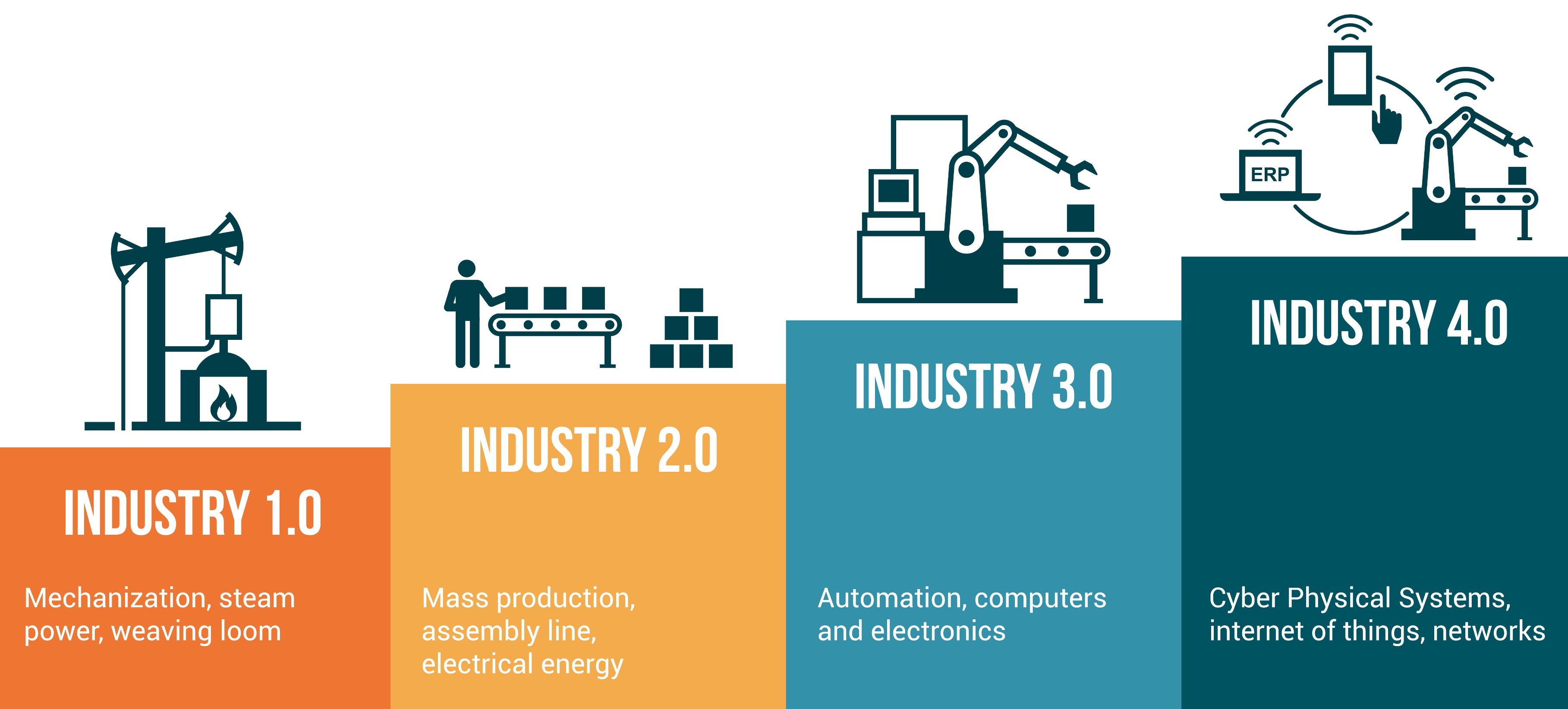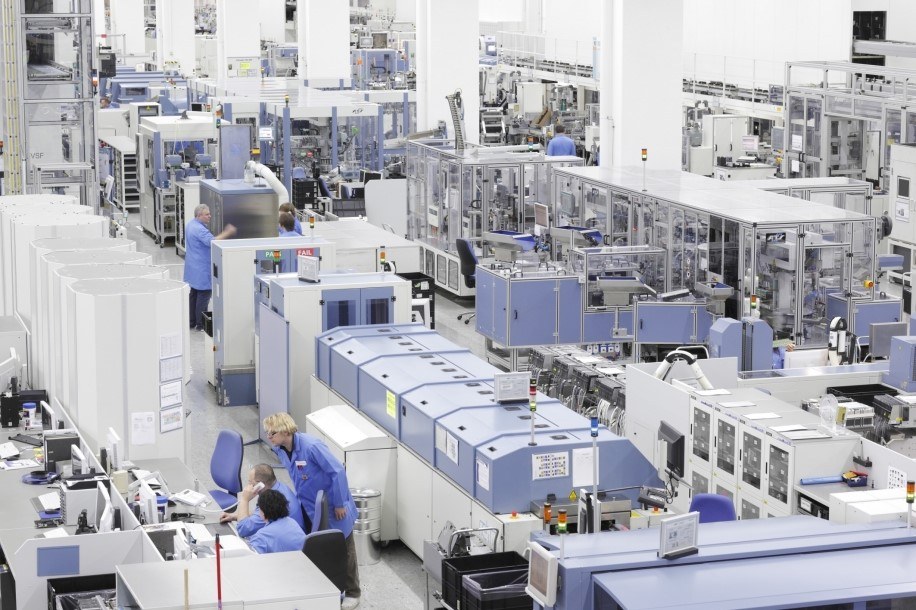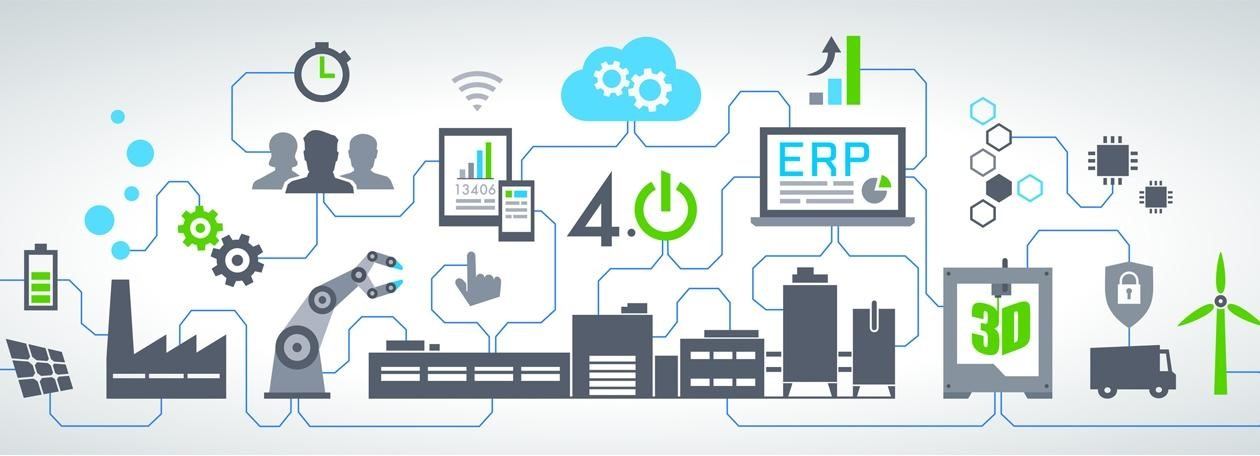Humans vs. machines – who will manage the factory of the future?

“Industry 4.0 is the vital question of Germany’s manufacturing industry” [1] states Joe Kaeser, CEO of Siemens AG, Europe’s largest industrial manufacturing company. Siemens’ Amberg plant became playground and showcase for the factory of the future. What will be the long-term implications?
Figure 1: Humans vs. machines [2]
Industry 4.0 as vital question for Germany and Siemens
Industry 4.0 refers to a forth industrial revolution after the invention of the steam machine and the mechanization of manual work in the 18th, the emergence of mass production in the 19th and manufacturing automation through computer technology in the 20th century (see figure 2).
 Figure 2: Industry 4.0 as fourth industrial revolution [3]
Figure 2: Industry 4.0 as fourth industrial revolution [3]
According to a recent study commissioned by the federation of German Industries, Germany alone presents an additional growth potential through Industry 4.0 of up to €425 B by 2025 [4]. Not surprisingly German industry leaders invest around €40 B annually into Industry 4.0 [5] and the German Government already subsidized research in the field with €200 M since 2010 [6]. Industry 4.0 will not only decide about Germany’s but also Siemens’ future competitiveness. A key question of Industry 4.0 is how manufacturing operations might look like in the plant of the future. This is extremely relevant for Siemens for two reasons: First, as a manufacturing business its own operations might be disrupted. Siemens currently has 289 major production sites around the world manufacturing a wide range of products from fire safety equipment over gas turbines to MRIs in Healthcare [7]. Second, since its automation division (€10.2 B revenues in 2016) accounts for 12% of the overall Industrial Business, it is crucial to think about new ways to create value for clients [8].
Amberg, playground and showcase for a digital factory – status quo and required next steps
In 2008 Siemens picked its electronic component plant in Amberg, Germany, to build a potential factory of the future [9]. On the short-term, Amberg serves as playground to test new systems and technologies, attract research partnerships with universities and benefit from German government subsidies while also showcasing its innovations and thought leadership to clients. On the medium term, Amberg will help Siemens answer two key questions:
- How will Industry 4.0 impact Siemens’ current business model?
- Can Siemens leverage Industry 4.0 to build a sustainable competitive advantage?
Today, the Amberg plant is Germany’s showcase for a digital factory  (see figure 3). 5000 employees produce about 120 product variations requiring around 350 changeovers daily [9]. Cutting-edge technologies allow for a 75% automated production with a quality yield of 99.99885% at an output rate of one unit per second [10]. These results are made possible through the “Internet of Things”, an interconnected system based on a common data model in which products not only communicate with machines but also control their own production. For instance, quality defects detected during production could immediately feed back into design, enabling direct changes of the bill of materials, the automation design etc. [9]. Every day, about 50 million pieces of process information are generated allowing to trace each product’s lifecycle [10].
(see figure 3). 5000 employees produce about 120 product variations requiring around 350 changeovers daily [9]. Cutting-edge technologies allow for a 75% automated production with a quality yield of 99.99885% at an output rate of one unit per second [10]. These results are made possible through the “Internet of Things”, an interconnected system based on a common data model in which products not only communicate with machines but also control their own production. For instance, quality defects detected during production could immediately feed back into design, enabling direct changes of the bill of materials, the automation design etc. [9]. Every day, about 50 million pieces of process information are generated allowing to trace each product’s lifecycle [10].
Figure 3: Siemens’ Amberg plant [11] – video: www.youtube.com/watch?v=fLZtOzHblA8
The more data digital factories generate and exchange the more these systems become vulnerable to potential internal and external cyberattacks. Siemens responds with a comprehensive protection of industrial plants through all levels “simultaneously – ranging from the plant management level to the field level and from access control to copy protection“ [12]. In addition, on September 19th, Siemens announced a global strategic partnership with PAS Global to improve cybersecurity through real time monitoring [13].
Furthermore, building the right competencies to operate the factory of the future is a key challenge. A study conducted by the Boston Consulting Group highlights that the increased use of software, connectivity, and analytics will require more employees with expertise in software development and IT technologies [14]. On the medium term, Siemens should consider partnering with some of the leading Tech companies such as Google to ensure access to external data. In a fully connected factory, access to both internal as well as external data will be key. Finally, I suggest building additional digital factories across business units and geographies. From an innovation perspective, the combination of different cultures and products can create completely new solutions.
Long term implications and open questions
Even if it is impossible to predict how the future factory will look like, the Amberg plant allows to think about a world in which “machines will organize themselves to a great extent, delivery chains will automatically assemble themselves, and orders will transform directly into production information and flow into the production process” [11] (see figure 4).
In such a world, who will manage Siemens’ factories? Will production managers be made redundant since machines provide a decentralized and more efficient way to make decisions and plan entire production processes? In my opinion, interconnected machines will be able to incrementally optimize existing production systems and entire supply chains. However, humans will always be required since machines will not be able to predict disruptive megatrends such as the next industrial revolution. Finally, how do we manage to stay ahead and most importantly how can we ensure that digitalization and Industry 4.0 as a key aspect not only benefits the leading industry nations and companies but society as a whole?
(789 words)
Sources
[1] Wolfgang Schroeder, “Germany’s Industry 4.0 strategy,“ Friedrich Ebert Stiftung, November 2016, http://www.fes-london.org/fileadmin/user_upload/publications/files/FES-London_Schroeder_Germanys-Industrie-40-Strategy.pdf, accessed November 2017.
[2] Linda Bucklin, “A modern take on the famous Michelangelo painting in the Sistine Chapel; titled, The Creation of Adam,” Illustration, Shutterstock, https://www.shutterstock.com/image-illustration/modern-take-on-famous-michelangelo-painting-28130593, license acquired November 14, 2017.
[3] Elenabsl, “Industrial revolution stages from steam power to cyber physical systems, automation and internet of things,” Illustration, Shutterstock, https://www.shutterstock.com/image-vector/industrial-revolution-stages-steam-power-cyber-524444866, license acquired November 14, 2017.
[4] Roland Berger Strategy Consultants, “The digital Transformation of Industry,” Bundesverband der Deutschen Industrie e.V., March 15, 2015, http://www2.caict.ac.cn/zscp/qqzkgz/qqzkgz_zdzsq/201508/P020150819465645080804.pdf, accessed November 2017.
[5] “Industrie 4.0,” on website of Federal Ministry of Economic Affairs and Energy (BMWi), https://www.bmwi.de/Redaktion/EN/Dossier/industrie-40.html, accessed November 2017.
[6] Ron Davies, “Industry 4.0 Digitalization for productivity and growth”, European Parliamentary Research Service, September 2015, http://www.europarl.europa.eu/RegData/etudes/BRIE/2015/568337/EPRS_BRI(2015)568337_EN.pdf, accessed November 2017.
[7] Siemens, “About Siemens,” https://www.siemens.com/global/en/home/company/about.html, accessed November 2017.
[8] Siemens, 2016 Annual Report 2016, p. 96, https://www.siemens.com/content/dam/internet/siemens-com/global/company/about/downloads/siemens-ar2016.pdf, accessed November 2017.
[9] Willy Shih, “Building the Digital Manufacturing Enterprise of the Future at Siemens” HBS No. 616-060 (Boston: Harvard Business School Publishing, 2016), p. 9-10.
[10] Ulrich Kreutzer, “Defects: A Vanishing Species?”, October 2014, on Siemens website, https://www.siemens.com/innovation/en/home/pictures-of-the-future/industry-and-automation/digital-factories-defects-a-vanishing-species.html, accessed November 2017.
[11] Sebastian Webel, “Industrie 4.0”: Seven Facts to Know about the Future of Manufacturing”, January 2016, on Siemens website, https://www.siemens.com/innovation/en/home/pictures-of-the-future/industry-and-automation/digtial-factory-trends-industrie-4-0.html, accessed November 2017.
[12] “Protecting productivity”, Siemens corporate brochure, (Nuremberg, Germany, 2017), p.2, on Siemens website, http://w3app.siemens.com/mcms/infocenter/dokumentencenter/sc/ic/InfocenterLanguagePacks/Produktivit%C3%A4t%20umfassend%20sch%C3%BCtzen/DFFA-B10076-01-7600.pdf, accessed November 2017.
[13] “Siemens and PAS announce global strategic partnership to provide essential industrial control system cybersecurity,” Joint Press Release by Siemens and PAS Global, September 19, 2017, https://www.siemens.com/press/pool/de/pressemitteilungen/2017/powergenerationservices/PR2017090428PSEN.pdf, accessed November 2017.
[14] Michael Rüßmann, et al. “Industry 4.0: The Future of Productivity and Growth in Manufacturing Industries.” Boston Consulting Group, April 9, 2015, https://www.bcgperspectives.com/content/articles/engineered_products_project_business_industry_40_future_productivity_growth_manufacturing_industries/?chapter=3#chapter3, accessed November 2017.
[15] “Dawn of the digital manufacturing world”, Illustration, Kärcher, https://s3.kaercher-media.com/asset/18797/1463465260/industry_4.0.jpg, accessed November 2017.




Pascal, thank you for a very interesting article! I think one of the most interesting aspects of the move towards fully-automated manufacturing facilities is the impact on the workforce. As you mention, there has been a transformation of the nature of “work” in each of the previous industry transitions. While societies have always adapted, these transitions have had lasting impacts on the skills that we have and the way that we spend our time. This transition will no doubt be similar, but I think it is yet to be seen how prepared we are for such a large change. A recent McKinsey report, “Jobs Lost, Jobs Gained: Workforce Transitions in a Time of Automation,” suggests that nearly 1/3 of current jobs could be displaced by automation. A displacement of this magnitude will require every society to figure out ways to retrain its workforce and ensure that its citizens are leading fulfilling lives. It won’t be easy, but I believe it is one of the most important challenges facing the global economy today.
Pascal, thank you for the article! Every time I read about automation I cannot help but think about the future of the workforce. I agree with your comment about humans still being required (as machines won’t be able to predict disruptive megatrends), but I believe that the ones who will suffer the most, at least at first, will be production employees… those whose jobs do not require a high level of education / training. Eventually, I see AI as the workforce of the future. I wonder how governments will address this issue and if they are thinking about it at the present. Elon Musk believes that governments will have to implement a form of universal basic income, and I wonder whether it will still be necessary for us to work at all. The more efficient production may lead to higher GDP… but how will it be distributed?